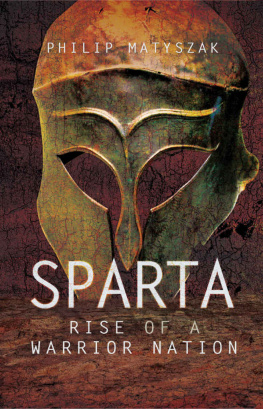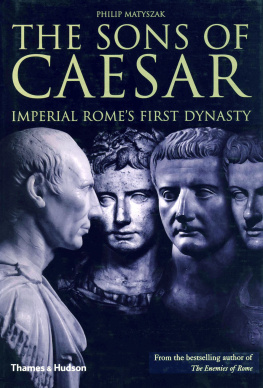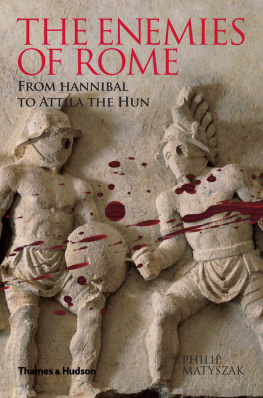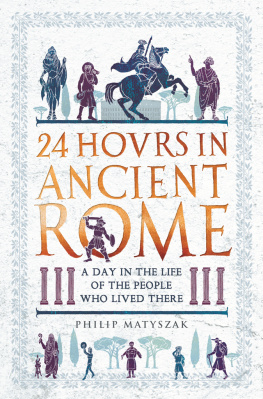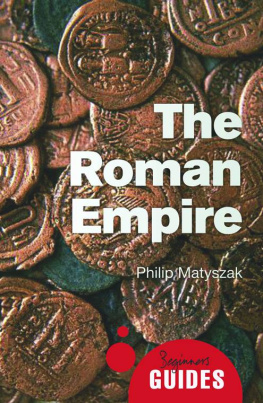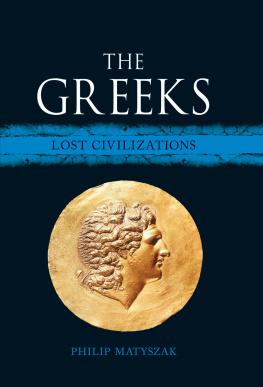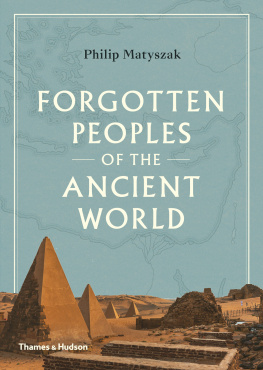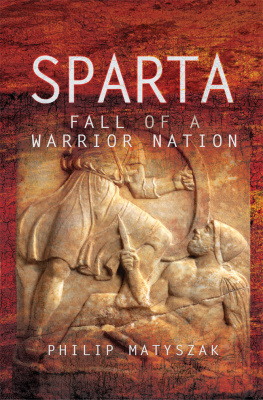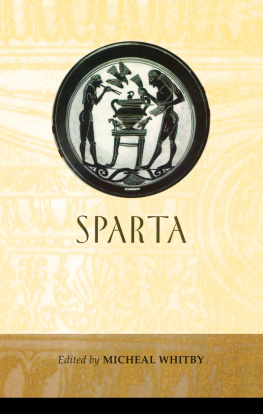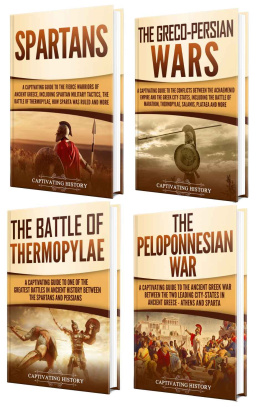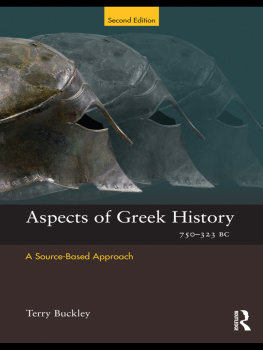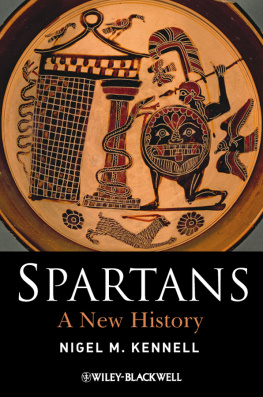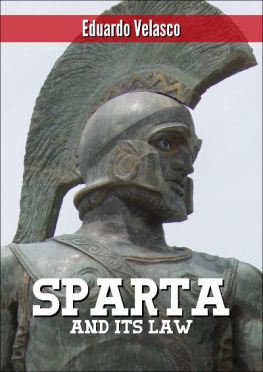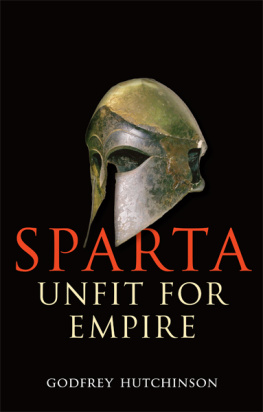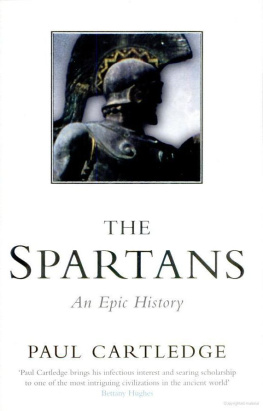Sparta
Sparta
Rise of a Warrior Nation
Philip Matyszak
To the memory of Diana Tansley
First published in Great Britain in 2017 by
PEN & SWORD MILITARY
an imprint of
Pen & Sword Books Ltd
47 Church Street
Barnsley
South Yorkshire
S70 2AS
Copyright Philip Matyszak, 2017
ISBN 978 1 47387 464 0
eISBN 978 1 47387 466 4
Mobi ISBN 978 1 47387 465 7
The right of Philip Matyszak to be identified as Author of this Work has been asserted by them in accordance with the Copyright, Designs and Patents Act 1988.
A CIP catalogue record for this book is available from the British Library
All rights reserved. No part of this book may be reproduced or transmitted in any form or by any means, electronic or mechanical including photocopying, recording or by any information storage and retrieval system, without permission from the Publisher in writing.
Pen & Sword Books Ltd incorporates the Imprints of Pen & Sword Aviation, Pen & Sword Maritime, Pen & Sword Military, Wharncliffe Local History, Pen and Sword Select, Pen and Sword Military Classics, Leo Cooper, Remember When, Seaforth Publishing and Frontline Publishing.
For a complete list of Pen & Sword titles please contact
PEN & SWORD BOOKS LIMITED
47 Church Street, Barnsley, South Yorkshire, S70 2AS, England
E-mail:
Website: www.pen-and-sword.co.uk
Contents
Glossary
A picked group of 300 enforcers
a herd of Spartan children in training
the Spartan education system
the Spartan kings
hoplite shield
Hoplite spear
file of warriors in the battle line
young men in the final stage of training
The Equals Spartan men in good standing
royal bodyguard
plots of land held by Spartiates
sword type
armour type
division of the Spartan people
love of boys
stage of the agoge
free non-Spartan Lacedaemonians
aristocratic faction
a ritual fight
fully paid-up Spartan warriors
Spartan communal mess
sword type
Chapter One
This is Sparta
Putting it in perspective...
Imagine a Persian ambassador in the year 492 BC. His master is Darius, the King of Kings. Darius domains stretch eastward from the shores of the Mediterranean to the Indus River, taking in the lands of modern Turkey, Syria, Jordan, Israel, Egypt, Iran and Iraq and encompassing goodly chunks of other lands as well. The population of this empire numbers in the tens of millions. The ambassador has come to demand the submission of the citystate called Sparta, in the territory of Laconia in Greece.
Rounding the peninsula of Cape Malea, the most southeasterly point of the Peloponnese, the ambassadors ship arrives at the little harbour where the River Eurotas meets the sea. The Lower Eurotas runs through a valley just 17 miles in length and 4 miles wide. Even from his ship at one end of the valley, the ambassador can clearly see the mountains at the valleys other end. Disembarking, he asks one of the locals, Are you a Spartan?
No, comes the reply. I am a periokos , one who lives in the vicinity of Sparta. Sparta is two-thirds of the way up the valley, on the western side.
Seriously? the ambassador must have asked himself. Here am I, from a mighty empire, come to demand homage from a city-state so tiny that it can completely fit into the grounds of just one of the kings hunting estates without seriously interfering with the livestock. How can this fly-speck of a city possibly defy me?
Even now, given how large the legend of Sparta looms in the modern consciousness, it is still astounding how small Sparta actually was in modern terms it has about the area and population of the small town of Ely near Cambridge in the United Kingdom. Even contemporary Greeks noticed that Sparta was remarkably unremarkable.
I suppose if Lacedaemon [Sparta] were ever to be abandoned, and nothing but the temples and the foundations of the buildings remained, later eras would refuse to believe the city was as powerful as its reputation.... The city is neither compact form nor boasting magnificent temples and public buildings. Rather it is a collection of villages in the old Greek style, and it all would seem rather inadequate.
Thu cy dides History of the Peloponnesian War 1, 10.
Sparta was situated in the south-east of the Peloponnese, and this southern peninsula of Greece is itself just 8,278 square miles one tenth the size of Turkey across the Aegean Sea. Furthermore, most of the Peloponnese is barren mountain rock, with spaces for human settlement being few and far between.
The geography of the Peloponnese had a profound effect on the history and psychology of the Spartans, so in examining the development of their extraordinary state, we should pay close attention to Spartas physical surroundings.
The Peloponnesian peninsula can be best imagined as the right paw of a massive dragon placed in the Mediterranean Sea. The dew-claw of this dragons paw is the Argolid peninsula in the north-east. Above that and more central lie the lands of Achaea and Corinth. To the west at the top of the paw is Elis, the land that for over a millennium hosted the eponymous games at Olympia.
In the centre lies the upland mass of Arcadia, an area with an average elevation of over 2000 feet above sea level, elaborately folded into a series of mountain ranges, and small, fierce streams in deep ravines and hidden valleys. Indeed so much geography has Arcadia that little space remains for history which has largely passed the region by, making Arcadia a modern metaphor for a timeless bucolic paradise.
For the Spartan historian, the Peloponnese gets really interesting as we approach the southern end, where the dragons claw extends three roughly equidistant talons southward towards Africa. The eastern talon is Malea, the central is Tainaron, and the western talon is stubby Akritas. Like knuckles behind each talon, there lies a mountain range behind, and extending into, each peninsula.
The knuckle which interests us most is behind the central peninsula of Tainaron. This is the Taygetos Range, the highest peak of which is Mount Taygetus. This mountain has a hugely significant role on our story, and is, incidentally the oldest named peak in Europe (thanks to a mention by Homer in the Odyssey ). The Taygetos Range itself is significant because the valley to the east, watered by the river Eurotas, comprises the fertile part of Laconia wherein Sparta lies. To the west, on the other side of the Taygetos Range, flows the parallel Pamisos River. The land around the River Pamisos is Messenia, a region both flat (by Peloponnesian standards) and highly fertile (ditto), divided in two by a single intruding mountain range.

